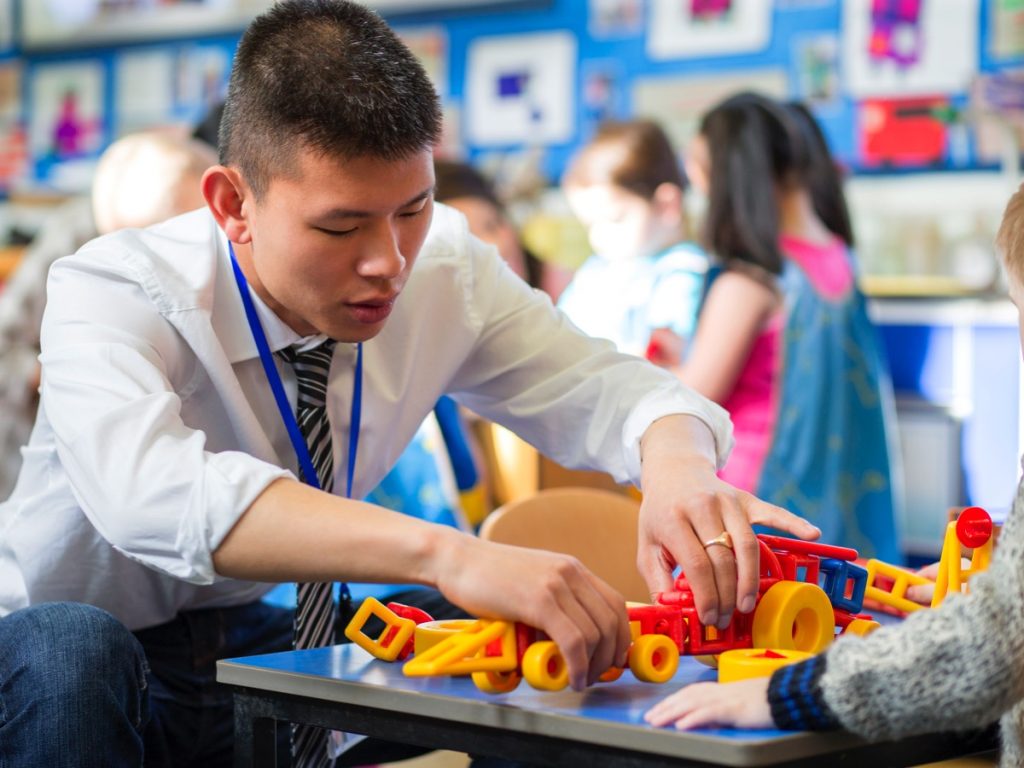
Children learn a lot from watching us. But as adults, our actions can sometimes be complicated. There may be several things that happen at once. How do children figure out which events happened by chance and which are causal?
In the classroom, at home, and throughout the day, children of all ages watch the people around them. These observations are a rich source of causal information. They also help the child figure out which causal relations are important in their own culture. Teachers also purposely do this – we show children how to do something before letting them try it on their own. Science suggests that children as young as two years old learn valuable causal lessons from watching what others do.
Infants don’t have much experience with the world and are willing to believe in a wide range of cause-and-effect relations. Scientists can use this to create novel and unusual cause-and-effect relations in the lab that infants have never seen before. For example, infants might watch an experimenter shake two different wooden toys. When she shakes one toy, a marble-dispensing machine turns on and a marble comes out. When she shakes the second toy, nothing happens. Then, infants get to play with the toys on their own. If the infant wants to turn on the marble-dispensing machine, he should only shake the wooden toy that worked. But if the baby just thinks it is fun to copy the experimenter, he could pick either toy to play with. Scientists find that infants choose to shake the toy that worked more than the one that didn’t work. This suggests that the infants are learning a lot just from watching us, and in fact are learning about cause and effect.
-
- Intervention
- an action taken on something with the goal of bringing about an effect
- Spatial contact
- when two or more objects touch each other